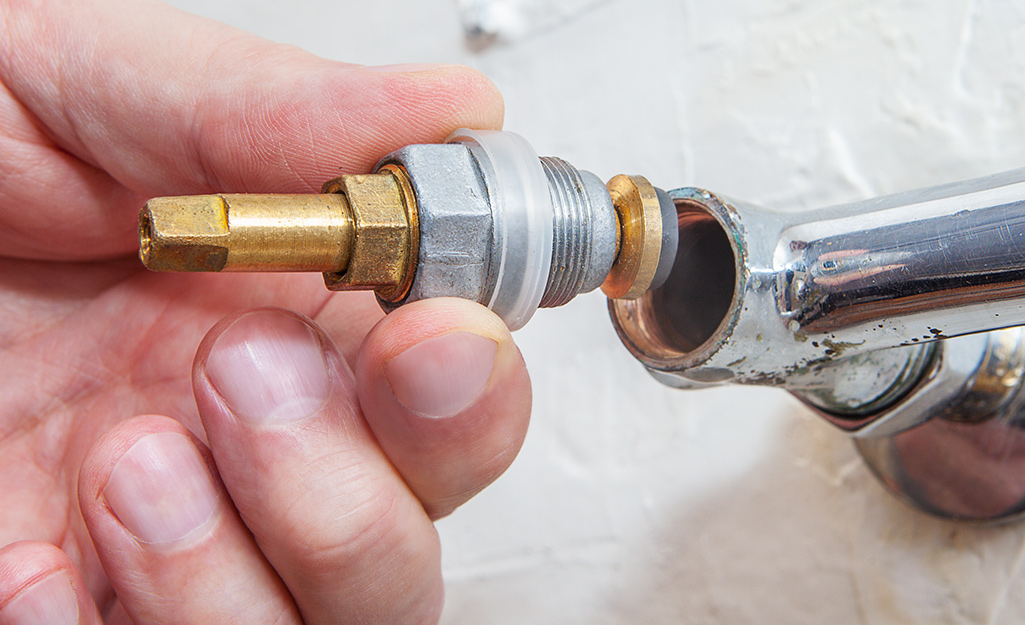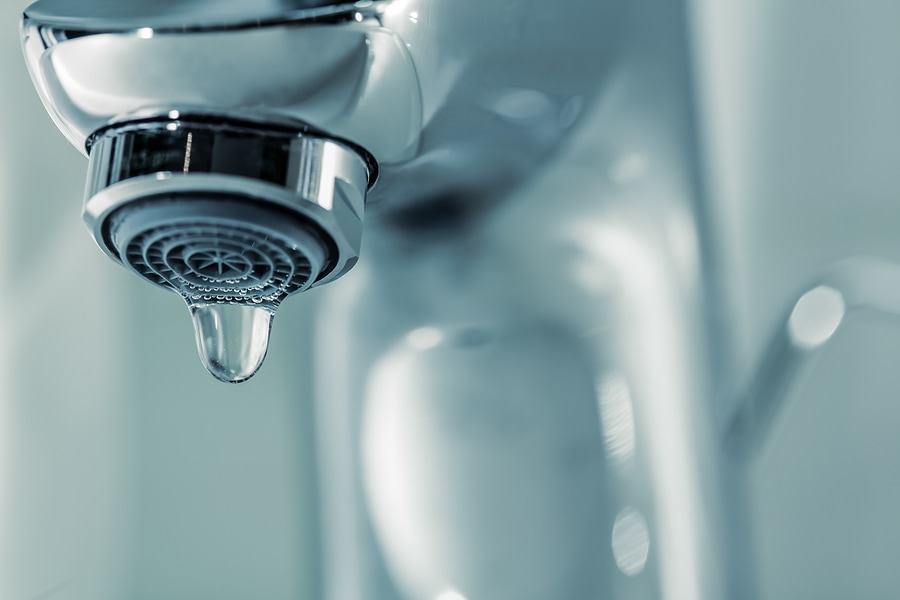Your Causes Behind Dealing with a Malfunctioning Faucet
Your Causes Behind Dealing with a Malfunctioning Faucet
Blog Article
Just how do you really feel on the subject of Leaky Faucets: Why They Happen & What to Do About Them?

Trickling faucets could feel like a minor inconvenience, yet their influence exceeds just the aggravation of the audio. From drainage to sustaining unnecessary financial expenses and wellness dangers, disregarding a trickling faucet can cause different effects. In this post, we'll explore why it's vital to resolve this common family problem quickly and properly.
Wastefulness of Water
Environmental Effect
Trickling faucets contribute considerably to water wastefulness. According to the Environmental Protection Agency (EPA), a solitary tap dripping at one drip per second can waste more than 3,000 gallons of water annually. This not only strains water resources however likewise impacts ecological communities and wildlife dependent on them.
Financial Costs
Raised Water Costs
Beyond the ecological effect, dripping taps can inflate water costs significantly. The gathered wastage in time translates right into greater utility expenditures, which could have been stayed clear of with prompt repairs.
Prospective Residential Or Commercial Property Damage
Additionally, prolonged dripping can result in damage to fixtures and surfaces surrounding the faucet. Water accumulation can create discoloration, deterioration, and also architectural problems if left ignored, leading to additional repair work costs.
Health Problems
Mold And Mildew and Mold Development
The continuous visibility of dampness from a trickling tap produces an excellent setting for mold and mold development. These fungi not just compromise indoor air quality yet additionally posture health and wellness threats, specifically for people with respiratory conditions or allergic reactions.
Waterborne Diseases
Stagnant water in leaking faucets can end up being a breeding ground for germs and various other microorganisms, boosting the threat of waterborne conditions. Pollutants such as Legionella bacteria grow in stationary water, possibly causing major ailments when ingested or inhaled.
Do it yourself vs. Specialist Repair work
Benefits and drawbacks of DIY Repair Work
While some may try to deal with a dripping faucet themselves, do it yourself repairs include their very own set of difficulties. Without appropriate expertise and tools, DIY efforts can worsen the concern or lead to incomplete repair work, lengthening the trouble.
Advantages of Working With a Professional Plumber
Working with a professional plumber guarantees that the underlying reason for the dripping faucet is attended to properly. Plumbers possess the expertise and equipment to detect and fix tap problems efficiently, saving time and minimizing the danger of further damages.
Step-by-Step Overview to Dealing With a Dripping Faucet
Devices Called for
Before attempting to take care of a trickling tap, gather the needed devices, including an adjustable wrench, screwdrivers, replacement parts (such as washing machines or cartridges), and plumber's tape.
Usual Faucet Issues and Their Solutions
Recognize the kind of faucet and the certain issue creating the drip. Usual issues consist of worn-out washing machines, corroded valve seats, or faulty O-rings. Refer to maker instructions or online tutorials for step-by-step assistance on repairs.
Preventive Measures
Routine Upkeep Tips
To avoid dripping taps, carry out routine maintenance such as cleaning aerators, evaluating for leakages, and changing worn-out components without delay. Furthermore, take into consideration setting up water-saving devices or updating to much more effective fixtures.
Relevance of Prompt Repair Works
Addressing dripping faucets as soon as they're seen prevents additional water wastefulness and prospective damage, ultimately conserving both water and money in the future.
Influence On Building Value
Assumption of Well-Maintained Building
Maintaining a property in good condition, consisting of dealing with upkeep concerns like leaking taps, boosts its regarded worth and desirability amongst possible purchasers or occupants.
Impact on Resale Worth
Properties with well-maintained plumbing components, including faucets, command greater resale values in the property market. Attending to dripping taps can contribute to a positive perception during residential or commercial property inspections and arrangements.
Environmental Obligation
Specific Contribution to Preservation
Taking responsibility for repairing trickling taps straightens with wider initiatives toward water preservation and ecological sustainability. Every individual's activities jointly make a significant influence on preserving precious resources.
Lasting Living Practices
By prioritizing prompt repairs and taking on water-saving routines, individuals contribute to lasting living practices that profit both present and future generations.
Conclusion
Addressing a dripping tap surpasses plain comfort; it's a crucial step towards saving water, decreasing financial expenses, and safeguarding health and home. Whether through do it yourself fixings or expert assistance, doing something about it to repair trickling faucets is a tiny yet impactful method to promote liable stewardship of sources and contribute to a much healthier, much more lasting future.
How to Fix a Dripping or Leaky Faucet
A leaking faucet is one of the most common problems that homeowners encounter, but it being commonplace doesn’t make it any less annoying. The constant drip drip drip of a leaking bathtub faucet, showerhead, or sink tap can disturb your home’s serenity. Left neglected, a dripping faucet can also result in higher water bills and discoloration or mold growth in your sink or plumbing fixtures.
Fortunately, you don’t have to be a trained plumber to know how to stop a dripping faucet. With some basic tools, replacement parts, and a little patience, leaky faucet repair is a breeze. In this article, we’ll explain what causes dripping faucets and how you can fix them.
What Causes a Leaking Faucet?
Kitchen and bathroom faucets come in all manner of designs, but most involve some combination of valves, O-rings, seals, and washers. The O-ring is usually the weakest link, but any one of these pieces can wear down over time. Heat, moisture, temperature fluctuations, minerals, mold, and movement can contribute to warping and corrosion, breaking the watertight seal. This just comes with the territory of being a homeowner. Everything is always subject to wear and tear, and some component parts of your appliances and fixtures need to be replaced on occasion. At least replacement O-rings are cheap!
More rarely, dripping faucets can be a symptom of excessively high water pressure. Were this the case in your home, you would probably notice that the leak is not isolated to one faucet. Water pressure issues are harder to resolve on your own. We recommend contacting a professional plumber if you suspect your water pressure is too high.
How to Fix a Dripping Faucet
Pipe wrench or monkey wrench Allen wrench set Screwdrivers Old towel or rag Shut off the water.
Before you do anything, you need to turn off the water to keep from drenching your kitchen or bathroom. You should find a valve under the sink and against the wall. Once you’ve turned this valve, try turning the faucet on to confirm that the water source has been cut off.
If you can’t locate your local valve for the faucet you’re working on, you can always shut off the water to the house at the main valve. Of course, this will prohibit anyone from using the sinks, showers, or toilets while you’re working on the faucet that’s giving you trouble.
Plug or block the drain.
You’ll be disassembling the faucet and removing some small bits of hardware. Plug the drain with a stopper or rag to avoid the possibility of a small screw falling into your P-trap.
Take apart the faucet assembly.
There are several varieties of kitchen and bathroom faucets, each with its own manner of assembly. For detailed instructions on how to disassemble your faucet, you can refer to the fixture’s manual or contact the manufacturer. If you know whether you have a ball, disc, cartridge, or compression faucet, you can find detailed schematics online.
In general, you need to begin by removing the faucet handles. You might notice a small screw that you’ll need to remove with a screwdriver or Allen wrench. If you don’t see any visible securing hardware, it’s likely hidden under a decorative cap that can be unscrewed or popped off with flathead screwdriver.
Remove each piece methodically, consulting a schematic when necessary. Take notes or arrange the pieces in such a way to make it easier to correctly reassemble the faucet later.
Remove the cartridge.
Once you’ve removed the handles and securing hardware, you should be able to remove the valve cartridge or stem. Some cartridges will slide right out. Other faucet models will require you to loosen a nut with a pipe wrench before you can remove the valve stem.
Examine the exposed hardware.
With the cartridge or stem removed, inspect the component parts. Check the rubber O-rings for wear and tear. Also examine the seat washer for corrosion or other damage. These pieces are usually the responsible parties for a dripping faucet, but it’s worth inspecting the other component parts while you have the faucet disassembled.
Find replacement parts.
Once you’ve identified which faucet component has failed, find an identical replacement. Your local hardware store should have O-rings, seat washers, and other standard components in stock. If you have a luxury or uncommon faucet, you may have to contact the manufacturer for a replacement part.
It’s a good idea to take your old parts with you to the hardware store so you can compare them with the store’s inventory and be sure you’re purchasing the correct replacement.
Reassemble the faucet.
With your new parts in hand, reconstruct the faucet and handles. Don’t be tempted to overtighten screws or nuts. You might think this could create a better seal, but it can instead damage or bend a delicate part of the assembly and create a new problem for you.
Turn on the water and test the faucet.
The only thing left to do is test your work. Unplug the sink, turn the water back on, and try the faucet. Congratulate yourself on a job well done!
https://www.libertyhomeguard.com/how-to-fix-a-dripping-or-leaky-faucet/

I'm certainly very serious about Leaky Faucets: Why They Happen & What to Do About Them and I really hope you appreciated the piece. Appreciated our write-up? Please share it. Help others check it out. Many thanks for your time invested reading it.
Report this page